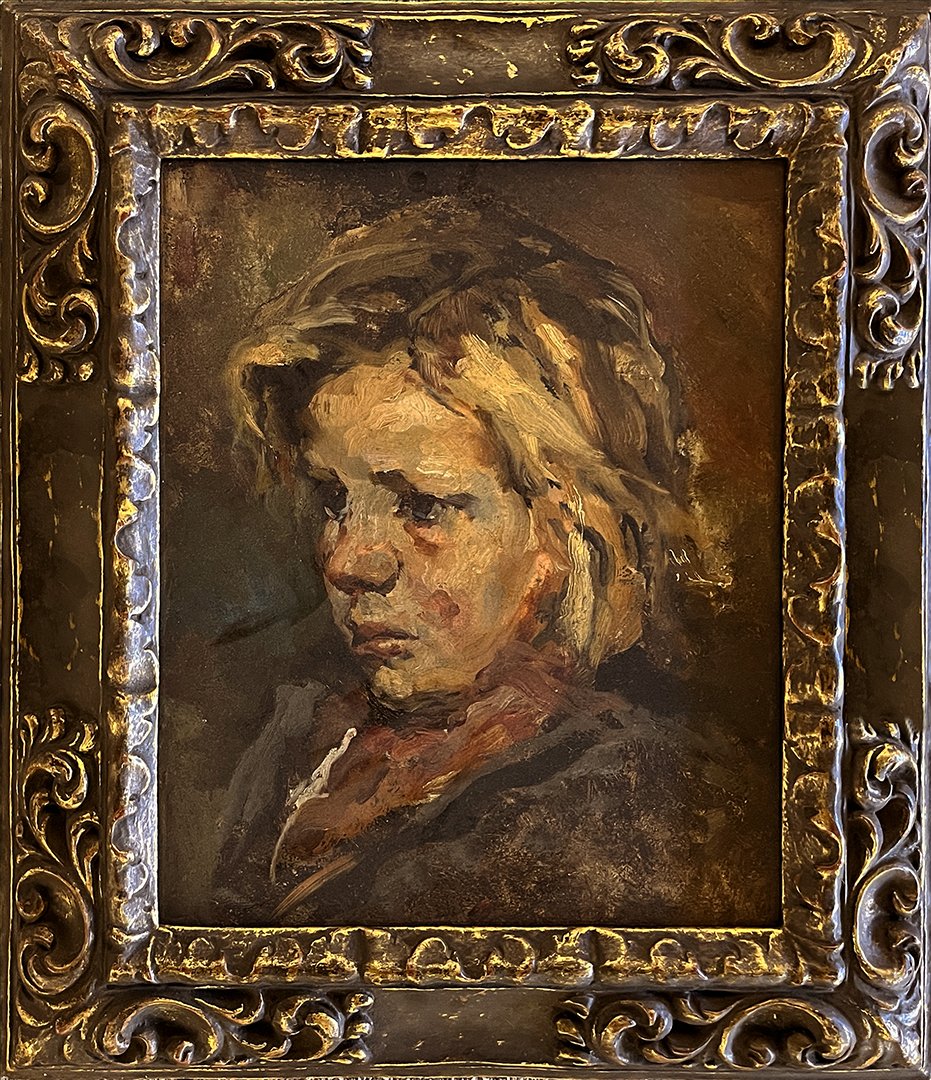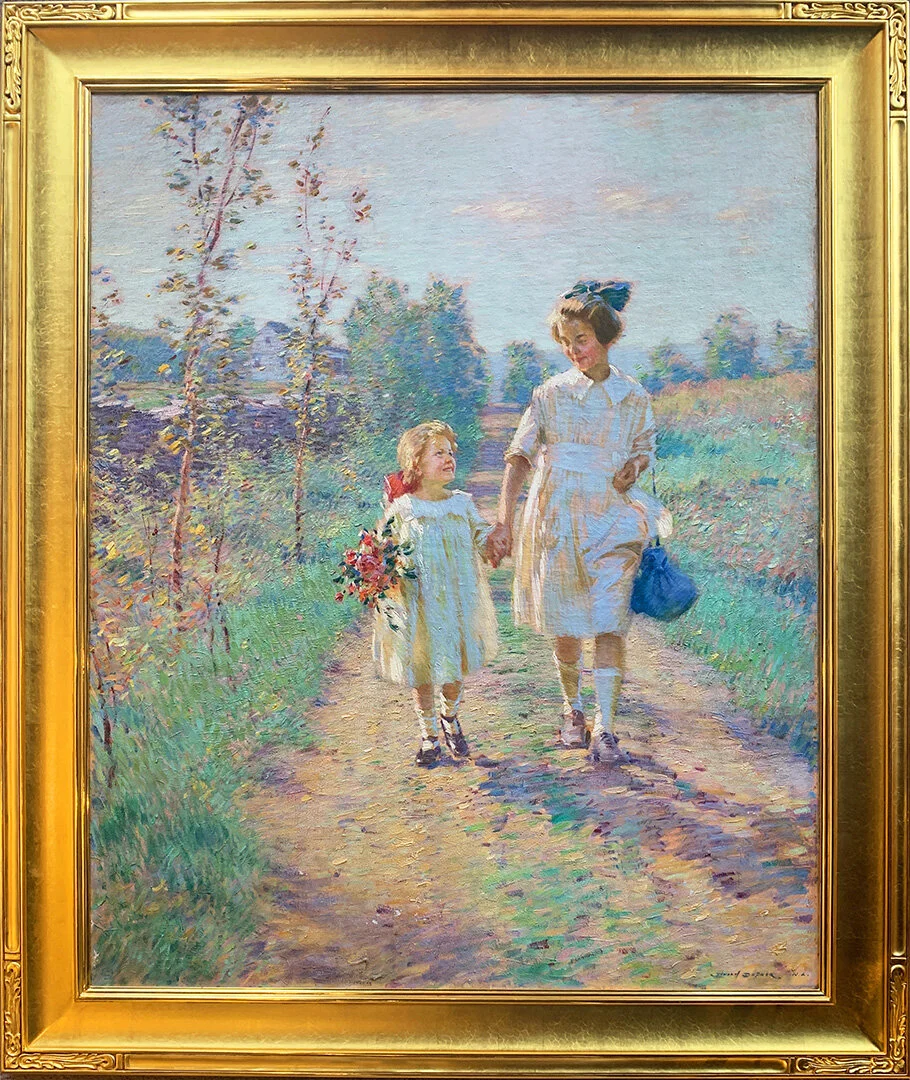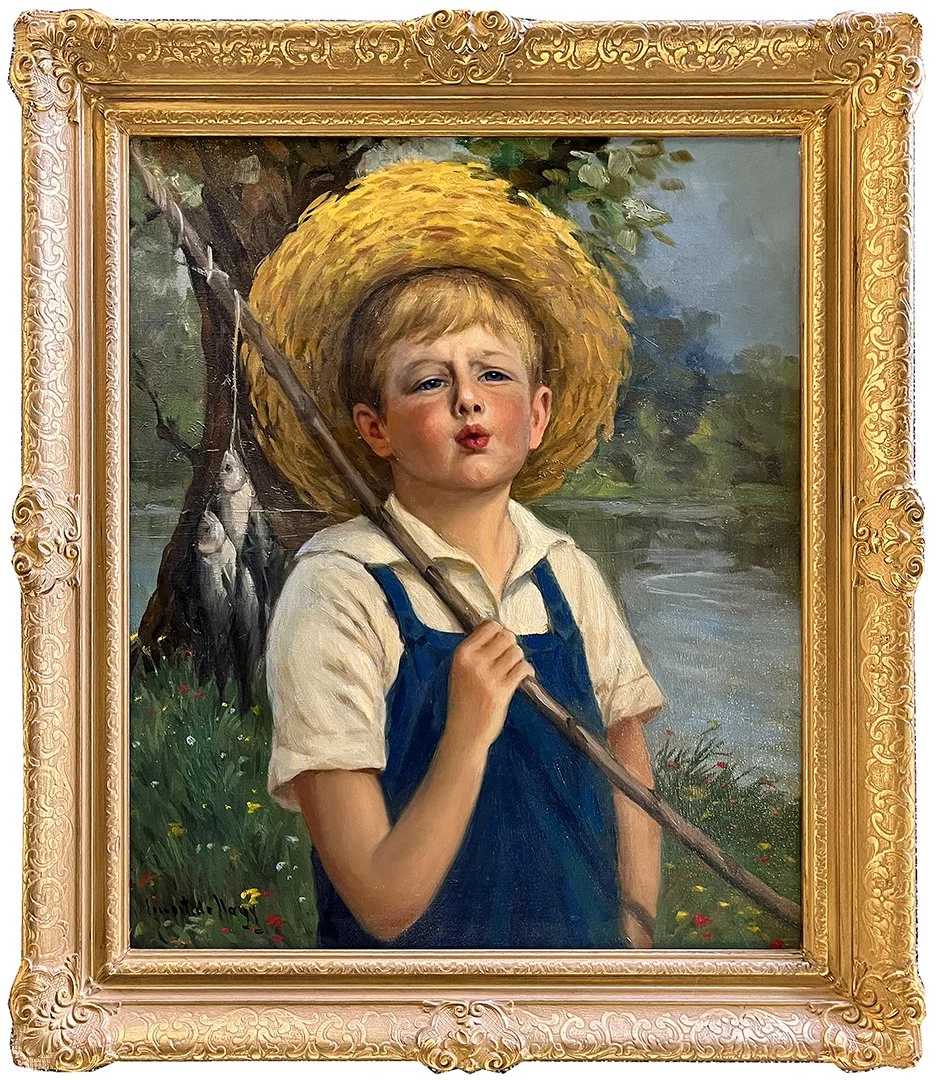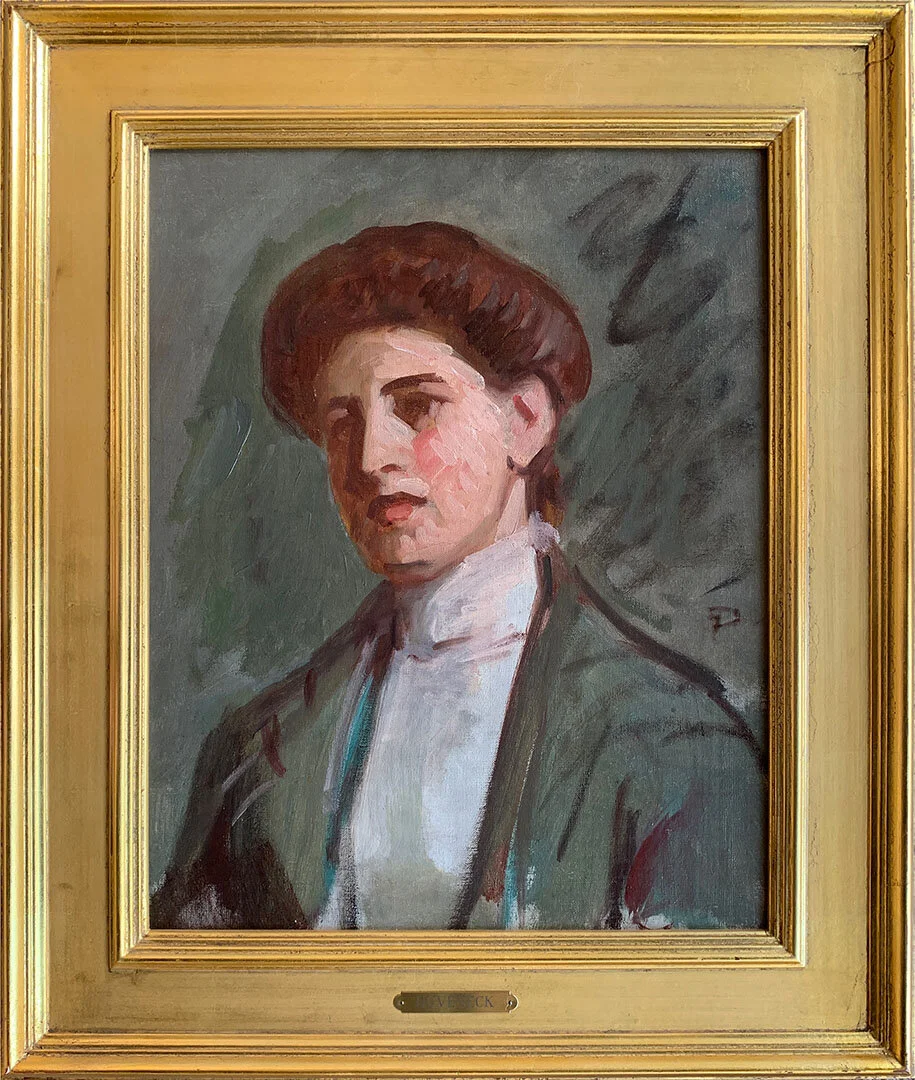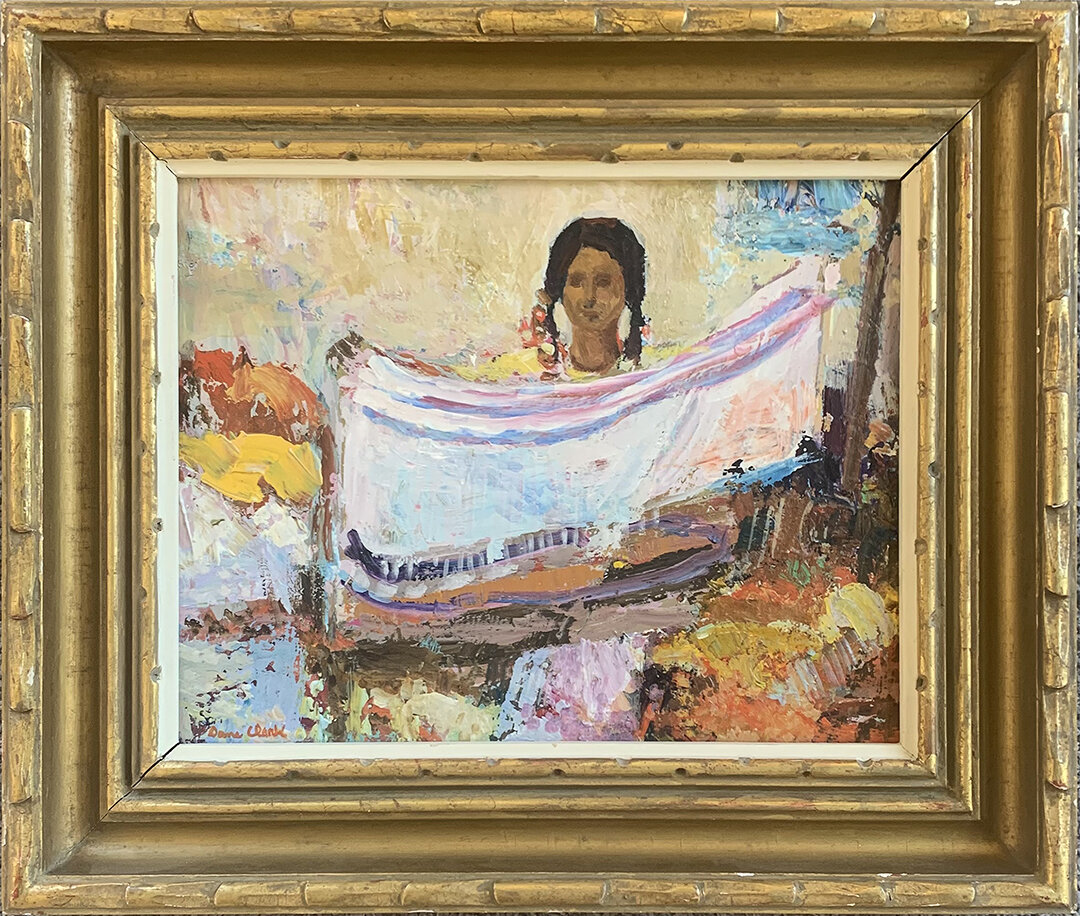Frank Currier
Frank Currier
Red Scarf
Oil on Board
14 x 12 inches
19 1/2 x 17 1/4 inches in the frame
Unsigned
ID: DH4531
A proponent of the Munich Style of bold, slashing brush-work and strong chiaroscuro, Joseph Frank Currier was from Boston, Massachusetts but from 1870 to 1898, spent most of his time living in Germany. He became a leader of an American art colony, which had begun as followers of Cincinnati painter Frank Duveneck. Previous to that, Currier studied in Antwerp and Paris and then settled in Munich after the outbreak of the Franco-Prussian War.
As a student in Munich 1870 to 1872, he became a strong proponent of the Munich realism that was taught German artist Wilhelm Leibl, who in turn had been heavily influenced by Gustave Courbet, the great French realist. Leibl and his immediate followers, which included Frank Duveneck and William Merritt Chase, patterned their work after the 17th-century Dutch painter Frans Hals.
In 1877, Currier moved to the Bavarian town of Polling, where he appears to have taken over leadership of the American art colony that initially rallied around Frank Duveneck.
In 1898, Currier returned to Boston in 1898 and was a leading exponent of the "American Barbizon" style of painting. In 1909, he threw himself in front of an on-rushing train.
Source:
Matthew Baigell, "Dictionary of American Artists"
Peter Falk, "Who Was Who in American Art"
Spanierman Gallery, Betty Krulick
